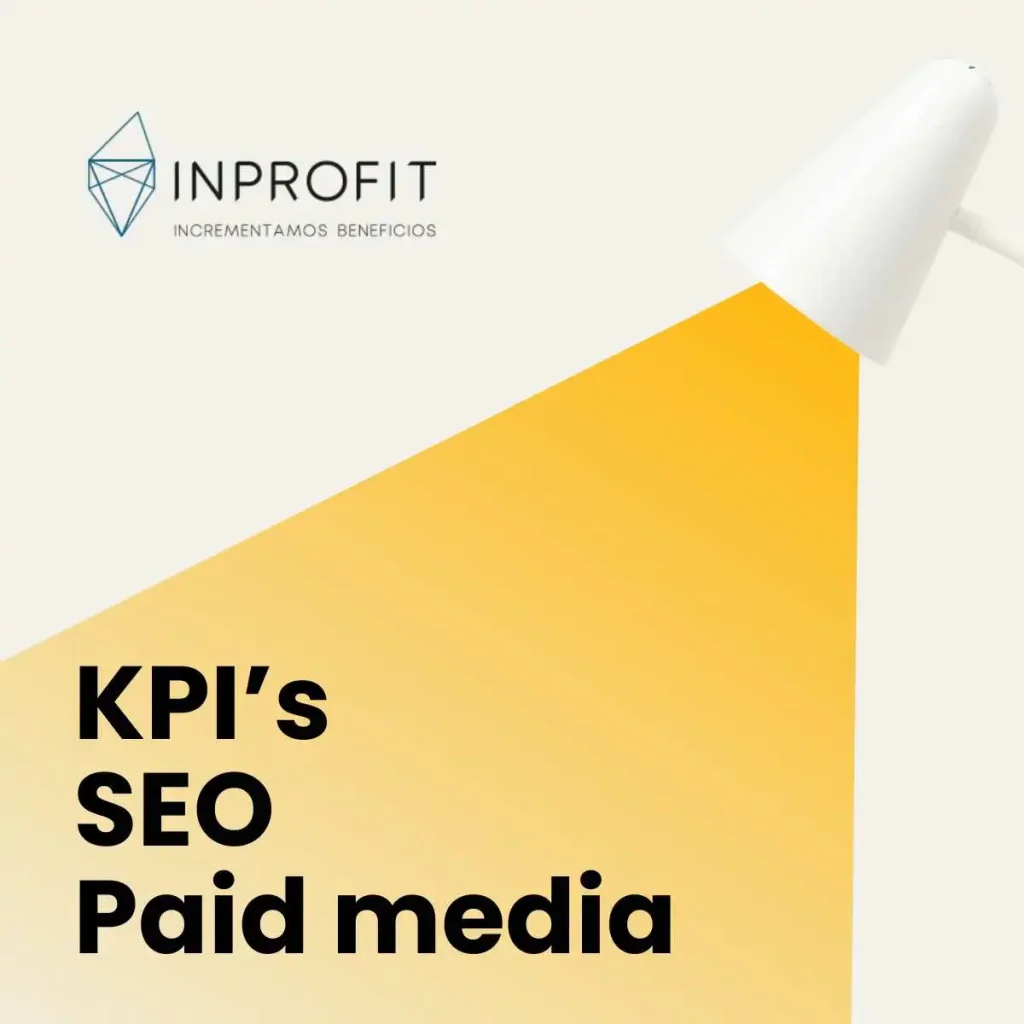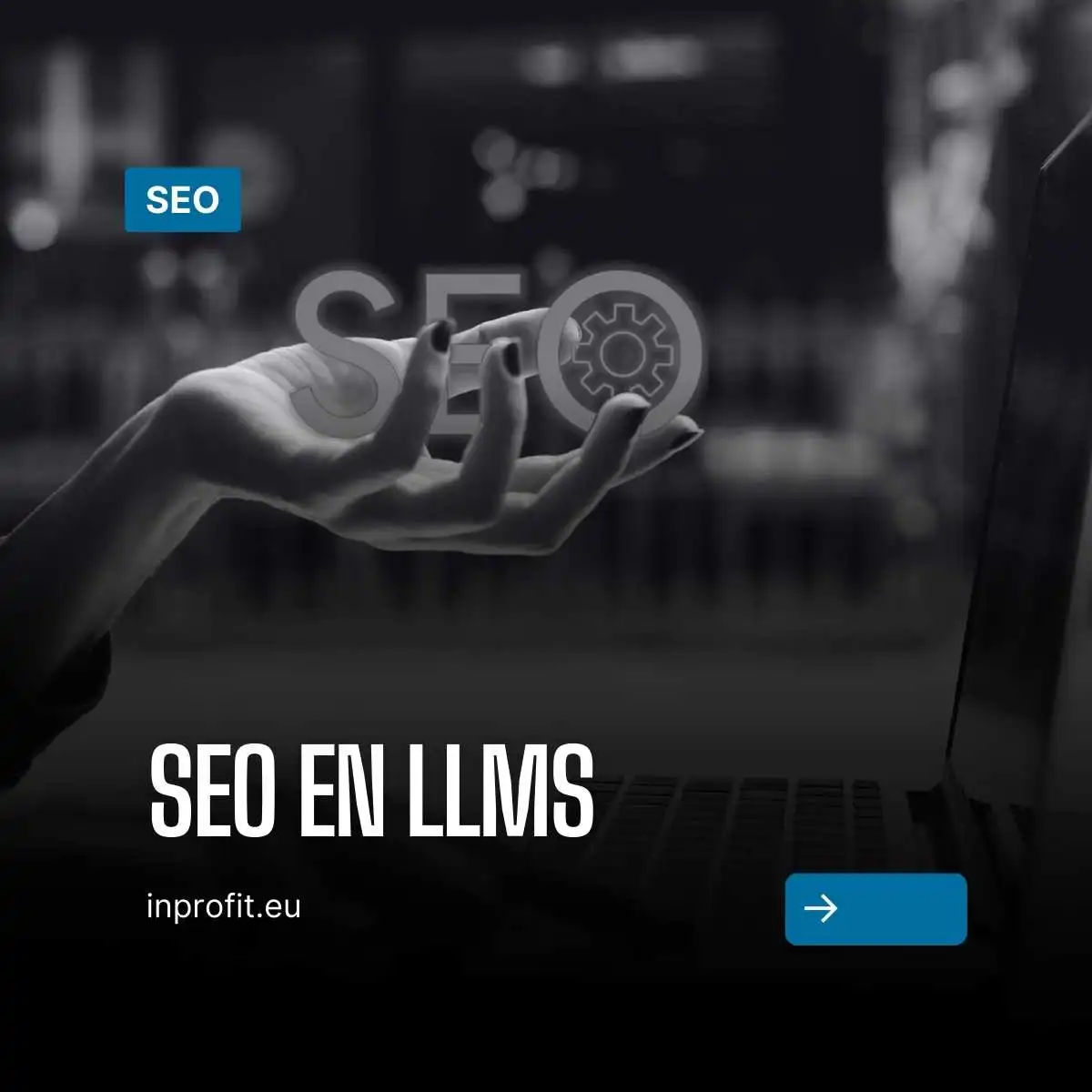These indicators will not only help you understand what is working, but also help you identify areas for improvement and make more informed decisions.
In this article, we’ll explore the SEO and Paid Media metrics you need to know about to optimize your strategies and achieve your business goals. From organic traffic to the ROI of your paid campaigns, we will guide you through the most important metrics and how to interpret them.
SEO indicators you can’t ignore
SEO is a long-term strategy that requires patience, but also constant monitoring to make sure you’re on the right track. Here are the most important indicators to monitor:
Organic Traffic
Organic traffic refers to the visits that come to your website through unpaid search results. It is one of the most important indicators because it reflects the effectiveness of your SEO strategy. If you are positioning your keywords well and creating quality content, you will see an increase in this type of traffic.
Tools like Google Analytics allow you to segment organic traffic and compare it to other sources, such as direct traffic or referral traffic. Pay attention to trends over time to identify if your efforts are paying off.
2. Positions in search results (Rankings)
Your position in the search results for relevant keywords is a direct indicator of your visibility in search engines. The higher you rank on the search results page (SERP), the more likely you are to receive clicks.
Tools like SEMrush or Ahrefs allow you to track your positions for different keywords. It is important not only to focus on primary keywords, but also on secondary keywords, as they can generate valuable traffic.
Click Through Rate (CTR)
CTR measures the percentage of users who click on your link after seeing it in the search results. A low CTR may indicate that your title or meta description is not attractive enough, even if you are well positioned.
To improve your CTR, make sure your titles and descriptions are clear, relevant and persuasive. You can also experiment with rich snippets, such as rating stars or FAQs, to stand out in the results.
4. Rebound Rate
The bounce rate measures the percentage of users who leave your website after viewing only one page. A high bounce rate may indicate that your content is not relevant to users or that the user experience on your site is not optimal.
To reduce the bounce rate, make sure your content is of high quality and well structured. It is also important to optimize the loading speed of your site and make sure it is responsive for mobile devices.
5. Domain Authority (DA)
Domain authority is a metric developed by Moz that predicts how well your website will rank in search engines. It is calculated on a scale of 1 to 100 and takes into account factors such as the quantity and quality of inbound links.
Increasing your domain authority requires a solid link building strategy, focused on getting links from high quality websites relevant to your industry.
Paid Media indicators to monitor
Paid Media campaigns, such as Google Ads or social media ads, are an excellent way to generate traffic and conversions quickly. However, to maximize your investment, it is crucial to monitor the following indicators:
1. Cost per Click (CPC)
The CPC is the cost you pay each time a user clicks on your ad. It is a key metric to evaluate the efficiency of your advertising budget. A high CPC may indicate that you are competing in a very saturated market or that your ads are not well optimized.
To reduce your CPC, make sure your keywords are relevant and targeted. You can also improve the quality of your ads and landing pages to increase your quality score, which can reduce your CPC.
Conversion Rate
Conversion rate measures the percentage of users who complete a desired action (such as making a purchase or filling out a form) after clicking on your ad. It is one of the most important metrics because it directly reflects the ROI of your campaigns.
To improve your conversion rate, make sure your landing pages are optimized and aligned with the message of your ads. It is also important to perform A/B tests to identify which elements work best.
3. Return on Investment (ROI)
ROI is the ultimate indicator to evaluate the success of your Paid Media campaigns. It measures the return on your investment by comparing the revenue generated with the cost of the campaign.
To maximize your ROI, it is essential to constantly monitor and adjust your campaigns. This includes optimizing your keywords, adjusting your bids and improving the relevance of your ads.
4. Cost per Acquisition (CPA)
CPA measures the cost of acquiring a customer through your Paid Media campaigns. It is especially useful for companies that have a long sales cycle or rely on multiple interactions before closing a sale.
To reduce your CPA, focus on targeting your audience more precisely and creating highly relevant ads. You can also use remarketing strategies to reach users who have already shown interest in your product or service.
5. Impressions and Outreach
Impressions refer to the number of times your ad is shown, while reach measures the number of unique users who have seen it. These metrics are important to evaluate the visibility of your campaigns.
While a high number of impressions can be positive, it’s important to make sure your ad is reaching the right audience. Use targeting tools to reach users who are most likely to convert.

New KPIs and trends in Digital Marketing
Digital marketing is constantly evolving, and with it, the key performance indicators (KPIs) we use to measure success. As technologies advance and consumer behaviors change, new metrics emerge that better reflect the impact of our strategies. One of the most relevant emerging KPIs is “Interaction Time,” which measures how much time users spend interacting with your content or platform. Unlike bounce rate, this indicator offers a deeper insight into user engagement, especially in environments such as mobile apps or video platforms. Companies are beginning to prioritize this KPI to better understand how users engage with their products and services in an increasingly digital world.
Another trend that is gaining momentum is the focus on the “Customer Experience” (CX). “Customer Experience (CX) as a core KPI. With increasing competition in almost every industry, customer experience has become a key differentiator. Metrics such as Net Promoter Score (NPS) and Customer Satisfaction Score (CSAT) are being complemented by more advanced analytics, such as emotion tracking through artificial intelligence and social media sentiment analysis. These tools allow companies not only to measure satisfaction, but also to predict future behavior and personalize the customer experience in real time.
Finally, sustainability and social responsibility are influencing the KPIs that companies choose to track. “Environmental Impact per Conversion” is a new metric that measures the environmental cost of marketing campaigns, from carbon footprint to resource usage.
This KPI is especially relevant for brands seeking to align themselves with the values of more environmentally conscious and committed consumers. In addition, metrics such as “Social Return on Investment (SROI)” are gaining ground, allowing companies to quantify not only the financial, but also the social and environmental impact of their actions. These trends reflect a shift towards more responsible marketing focused on the long-term well-being of society and the planet.
How to integrate SEO and Paid Media to maximize results?
Although SEO and Paid Media are different strategies, they can complement each other to maximize your results. For example, data from your Paid Media campaigns can help you identify profitable keywords that you can then incorporate into your SEO strategy. Similarly, content that performs well in SEO can be promoted through Paid Media to increase its reach.
In addition, remarketing based on user behavior on your website can help you reconnect with those who did not convert on their first visit. This is especially useful for companies with long sales cycles or high-value products.
Analytical Digital Marketing Agency
Both SEO and Paid Media are powerful tools to boost the growth of your online business. However, their success depends on your ability to monitor and analyze the right metrics. From organic traffic and conversion rate to ROI and CPA, these metrics will provide you with the information you need to make informed decisions and optimize your strategies.
Remember that digital marketing is an iterative process. What works today may not work tomorrow, so it’s crucial to be aware of trends and be willing to adapt. With the right metrics on your radar, you’ll be better equipped to navigate the complex world of digital marketing and achieve your business goals.
Betting on an analytical marketing agency is a strategic decision for any company seeking to maximize its return on investment and optimize its advertising campaigns. These types of agencies specialize in the use of data and advanced tools to measure, analyze and understand consumer behavior, which allows them to make decisions based on evidence and not on assumptions.
By implementing strategies supported by deep analytics, companies can identify growth opportunities, better segment their audience and personalize their messages to increase the effectiveness of their campaigns. In addition, the analytical approach allows them to adjust strategies in real time, optimizing resources and ensuring that every action is aligned with business objectives. In an increasingly competitive and digital world, having an analytical marketing agency becomes a key advantage to stand out and achieve sustainable results.
Are you ready to take your strategy to the next level? Start monitoring these key indicators today!




